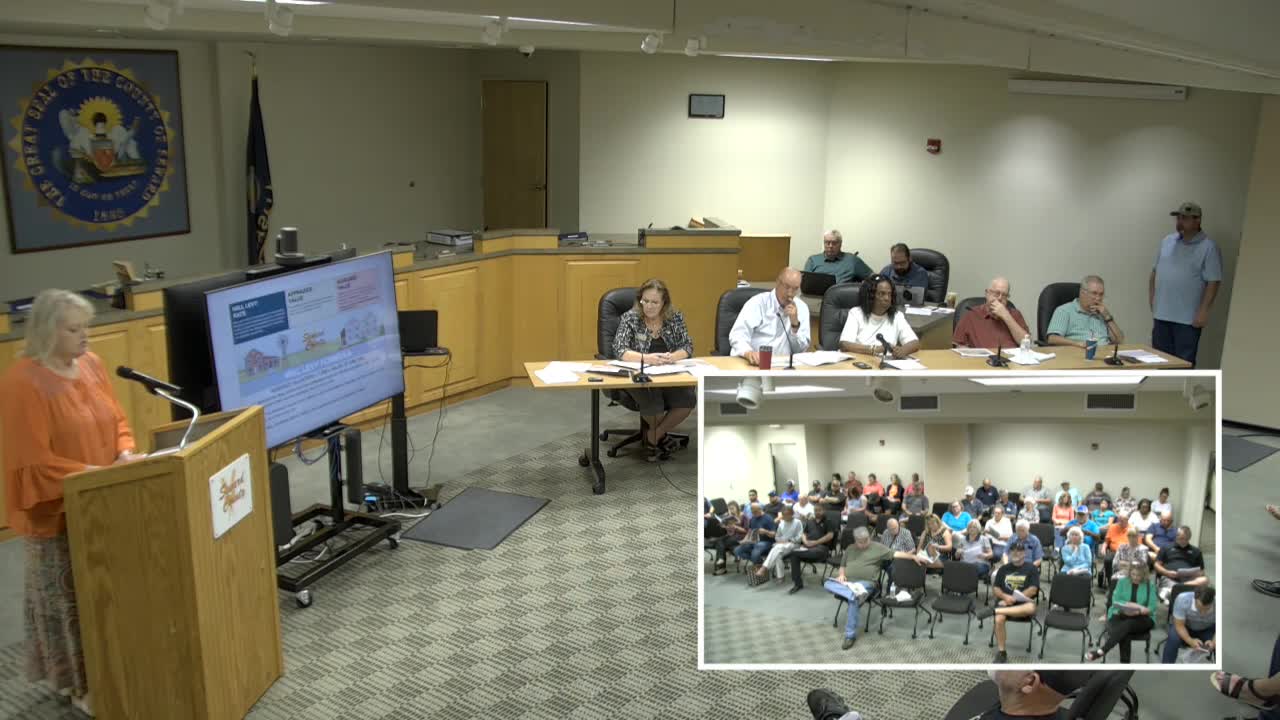County Appraiser Explains Property Valuation and Tax Assessment Process
August 14, 2025 | Seward County, Kansas
This article was created by AI summarizing key points discussed. AI makes mistakes, so for full details and context, please refer to the video of the full meeting. Please report any errors so we can fix them. Report an error »

At the recent Seward County Town Hall meeting, the spotlight was on property valuation and tax assessment, crucial topics for residents navigating their financial responsibilities. The county appraiser explained the systematic approach to determining property values, emphasizing that assessments are based on established state guidelines rather than arbitrary decisions.
Residents learned that properties are appraised at fair market value as of January 1 each tax year, with specific rules for agricultural land, which is assessed based on its use value. Valuation notices are sent annually, providing official estimates of property values.
The appraiser detailed the assessed valuation rates: residential properties are taxed at 11.5%, industrial and commercial properties at 25%, and agricultural properties at 30% of their production value. This assessed valuation is critical as it forms the basis for calculating property taxes.
A key point of discussion was the mill levy, which determines the tax amount owed per dollar of assessed value. The mill levy rate varies across jurisdictions, including city, county, and school districts, and is essential for funding public services. The appraiser clarified that one mill equals $1 per $1,000 of assessed value, making it easier for residents to estimate their tax bills.
The meeting provided valuable insights into the property tax process, ensuring residents are better informed about how their taxes are calculated and what to expect in their valuation notices. As the county prepares for the upcoming tax year, understanding these processes will be vital for Seward County residents.
Residents learned that properties are appraised at fair market value as of January 1 each tax year, with specific rules for agricultural land, which is assessed based on its use value. Valuation notices are sent annually, providing official estimates of property values.
The appraiser detailed the assessed valuation rates: residential properties are taxed at 11.5%, industrial and commercial properties at 25%, and agricultural properties at 30% of their production value. This assessed valuation is critical as it forms the basis for calculating property taxes.
A key point of discussion was the mill levy, which determines the tax amount owed per dollar of assessed value. The mill levy rate varies across jurisdictions, including city, county, and school districts, and is essential for funding public services. The appraiser clarified that one mill equals $1 per $1,000 of assessed value, making it easier for residents to estimate their tax bills.
The meeting provided valuable insights into the property tax process, ensuring residents are better informed about how their taxes are calculated and what to expect in their valuation notices. As the county prepares for the upcoming tax year, understanding these processes will be vital for Seward County residents.
View full meeting
This article is based on a recent meeting—watch the full video and explore the complete transcript for deeper insights into the discussion.
View full meeting
